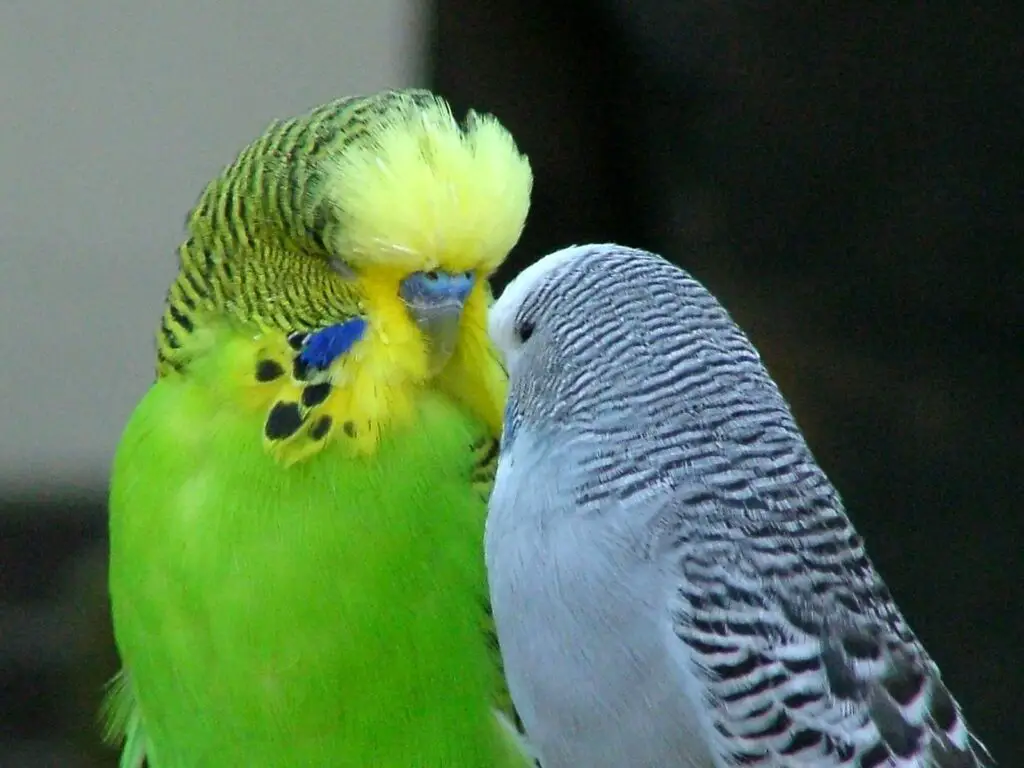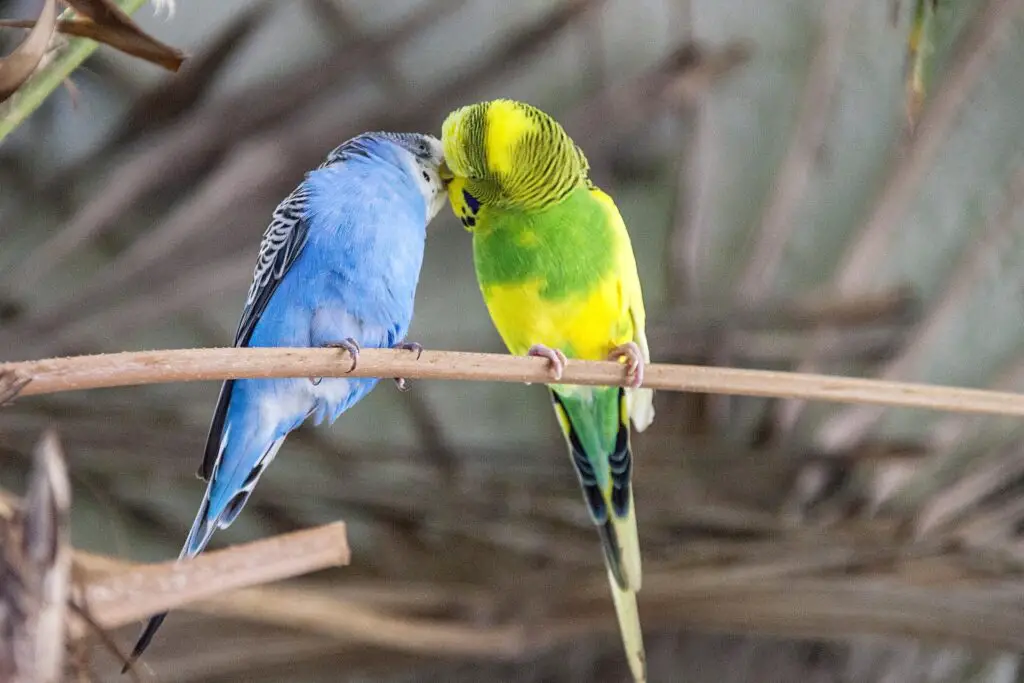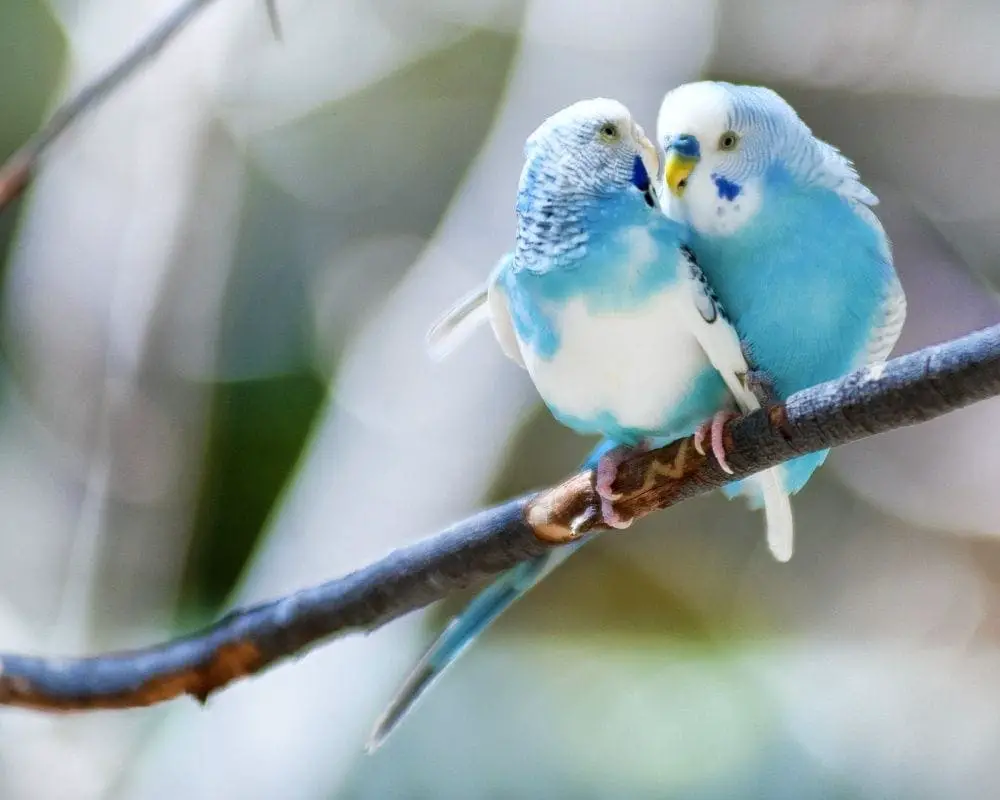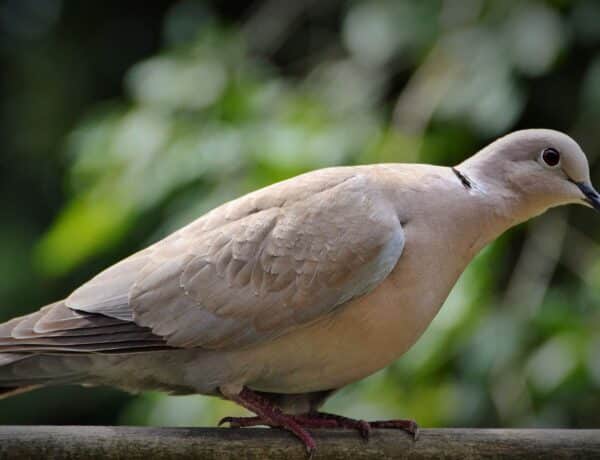Introduction
How To Take Care Of Parakeets: Taking care of parakeets, also known as budgerigars or budgies, requires a thoughtful and attentive approach to ensure the well-being of these charming and intelligent birds. These small, colorful members of the parrot family are popular pets due to their playful personalities and ability to mimic sounds. To provide the best care for your parakeet, it’s crucial to create a suitable environment. Start with a spacious cage that allows room for flight and includes perches, toys, and swings to stimulate both physical and mental activity. Placing the cage in a location with natural light, away from drafts and direct sunlight, contributes to a comfortable living space.
Nutrition is a cornerstone of parakeet care. Offering a well-balanced diet is essential for their health and longevity. A staple of their diet includes high-quality parakeet pellets, supplemented with fresh fruits, vegetables, and the occasional treat. Clean and fresh water should always be available. Regular vet check-ups are crucial to monitor your parakeet’s health and catch any potential issues early on. Proper grooming, such as trimming their nails and wings if necessary, is also part of the routine care to ensure they are comfortable and safe in their surroundings.
Building a strong bond with your parakeets friend is not only fulfilling for you but also vital for their social well-being. Spend quality time interacting with your bird through talking, playing, and gentle handling. Patience is key, especially when taming a new parakeet, as they may take time to acclimate to their new environment and human companionship. By establishing a nurturing routine and providing a loving environment, you can create a happy and healthy life for your feathered friend.

Is taking care of a parakeet easy?
They are usually thought of as easy keepers- and are traditionally given bird seed and water and kept as multiples in relatively small cages.
Taking care of a parakeet is generally considered to be on the easier side of pet ownership, especially when compared to some larger or more high-maintenance pets. However, it’s while parakeets are relatively low-maintenance, they still require proper care and attention. Here are some aspects to consider:
Housing: Providing a suitable and comfortable living space is essential. A cage that is appropriately sized with perches, toys, and accessories is Regular cleaning of the cage is necessary to maintain a healthy environment.
Diet: Parakeets need a balanced diet that includes high-quality pellets, fresh fruits, and vegetables. Ensuring access to clean and fresh water is crucial. Monitoring their diet is not complex but requires attention to detail.
Healthcare: While parakeets are generally hardy birds, they can still get sick. Regular veterinary check-ups are to catch any potential health issues early. Grooming, such as nail trimming and wing clipping, may be necessary.
Social Interaction: Parakeets are social birds and benefit greatly from interaction with their human caregivers. Spending time talking to, playing with, and training your parakeet helps to build a strong bond and keeps them mentally stimulated.
Environmental Considerations: Placing the cage in a suitable location, away from drafts and direct sunlight. Providing natural light and maintaining a comfortable temperature is essential for their well-being.
While these aspects might seem straightforward, they do require consistent attention. Like any pet, the ease of caring for a parakeet depends on your commitment, willingness to learn, and ability to provide the necessary time and resources. It’s crucial to research and understand the specific needs of parakeets to ensure a happy and healthy relationship with your feathered friend.
Are parakeets hard to take care of?
The common pet parakeet belongs to the family Melopsittacus undulatus and is a type of small, seed-eating, long-tailed parrot. Though relatively easy birds to care for, parakeets need clean surroundings, a proper diet, social interaction, and mental stimulation.
Parakeets are generally considered to be one of the more manageable bird species to care for, making them popular pets for individuals or families new to avian companionship. While they are not extremely demanding, it’s essential to understand and fulfill their specific needs for optimal health and happiness.
One of the factors that contribute to the perception of parakeets as being relatively easy to care for is their size. Compared to larger parrot species, parakeets have lower space requirements and are more adaptable to smaller living environments. They are also known for their hardiness and resilience, making them more forgiving of minor fluctuations in care.
It’s Recognize that “easy to care for” doesn’t mean zero effort. Parakeets still require attention, time, and a commitment to meeting their needs. They thrive on social interaction, mental stimulation, and a balanced diet. Regular cleaning of their living space, monitoring their health, and providing opportunities for exercise are all crucial components of responsible parakeet care.
The perceived difficulty in caring for parakeets may vary from person to person, depending on individual circumstances and levels of commitment. For someone willing to invest time in understanding and meeting the needs of these small, intelligent birds, the experience of caring for a parakeet can be highly rewarding.
What does a parakeet eat?
They feed on seeding grass far more than large parrots. In the wild they also eat fruit, nectar from flowers, insects and their larvae. And like the larger parrot species, they’ll also eat tree seeds, fruits, berries, buds and bark.
Parakeets have specific dietary needs to ensure their health and well-being. A well-balanced diet for a parakeet typically includes the following components:
Parakeet Pellets: High-quality parakeet pellets provide a nutritionally complete and balanced base for their diet. These pellets are specially formulated to meet the dietary requirements of parakeets and contain essential vitamins and minerals.
Fresh Fruits and Vegetables: Parakeets benefit from a variety of fresh fruits and vegetables to supplement their diet. Some suitable options include apples, carrots, leafy greens, berries, and bell peppers. These foods provide vitamins, minerals, and antioxidants.
Seeds: While seeds can be part of a parakeet’s diet, they should not be the primary component. Seeds are high in fat, and an exclusive seed diet can lead to nutritional deficiencies. Limit seed intake and use them as a treat rather than a main source of nutrition.
Calcium: Parakeets require calcium for strong bones and eggshell formation (if applicable). Cuttlebones and mineral blocks are excellent sources of calcium and also serve as a means for parakeets to keep their beaks trimmed.
Clean, Fresh Water: Water is a crucial part of a parakeet’s diet. Ensure that your parakeet has access to clean and fresh water at all times.
Avoid giving parakeets foods that are toxic to them, such as avocado, chocolate, caffeine, and certain fruits with pits or seeds that may be harmful.
Should I touch my parakeet?
Your bird should be a part of your family and you should spend some one-on-one time with him every day, but that doesn’t necessarily mean holding and stroking the bird. Some birds just don’t like human hands on them; they love to hang out and play with their people, but prefer not to be physically touched.
It’s generally beneficial to establish physical contact with your parakeet. While individual birds may have different temperaments and levels of comfort with human interaction, most parakeets can be tamed and enjoy gentle handling. Here are some tips for touching and interacting with your parakeet:
Go Slow: If your parakeet is new to your home or is not used to being handled, it’s crucial to go at their pace. Spend time near the cage, talking to them softly and allowing them to get used to your presence.
Hand Training: Use positive reinforcement to encourage your parakeet to step onto your finger. You can start by offering treats or using a favorite toy to create a positive association with your hand. Gradually, you can introduce your finger for them to perch on.
Respect Boundaries: Pay attention to your parakeet’s body language. If they show signs of stress or discomfort (such as rapid breathing, fluffing up, or beak clacking), give them some space. Respect their boundaries and avoid forcing them into interactions.
Gentle Touch: Once your parakeet is comfortable with perching on your finger, you can gently stroke their head and neck. Some birds may enjoy this, while others may prefer to be left alone. Observe their reactions to understand their preferences.
Regular Interactions: Consistency is key to building trust and comfort. Regular, positive interactions will help strengthen the bond between you and your parakeet. Spend time talking to them, offering treats, and engaging in activities they enjoy.
Is sunlight good for parakeets?
For pet birds, a minimum of 30 minutes of direct sunlight exposure per week is for adequate vitamin D production. But the more you can give them, the better.
Natural sunlight is beneficial for parakeets. Exposure to sunlight provides essential UVB rays that enable birds to produce vitamin D3 in their skin. Vitamin D3 is crucial for the absorption and metabolism of calcium, which is essential for strong bones and overall health in parakeets.
Here are some key points to consider regarding sunlight for parakeets:
Natural Sunlight: If possible, allow your parakeet access to natural sunlight. This can be achieved by placing their cage near a window where they can receive indirect sunlight. Make sure the temperature is comfortable, and there is no risk of drafts.
UVB Lighting: In cases where access to natural sunlight is limited, you can use artificial UVB lighting designed for birds. UVB bulbs can be installed in the bird’s enclosure, providing the necessary spectrum of light for vitamin D3 synthesis.
Supervised Outdoor Time: If you have a safe outdoor space, you may consider allowing your parakeet some supervised outdoor time in a secure cage. Ensure that the outdoor environment is free from potential hazards, and the bird is protected from predators.
Regulate Exposure: While sunlight is beneficial, it’s crucial to avoid prolonged exposure to direct sunlight, especially during the hottest parts of the day. Ensure that your parakeet has access to shaded areas in their cage to retreat from the sun.
Considerations for Housebound Birds: If your parakeet primarily lives indoors and doesn’t have access to natural sunlight, providing a well-balanced diet with vitamin D supplementation may be necessary. Consult with a veterinarian to ensure your bird’s nutritional needs are met.
What stresses a parakeet?
Changes – During times of change (e.g. moving home, change of routine), birds can become confused and stressed. Even simply moving their cage to the other side of a room can cause stress. If moving is necessary, try placing a sheet over the bird’s cage to keep them calm.
sunlight is beneficial for parakeets. Exposure to natural sunlight provides essential ultraviolet B (UVB) rays, which stimulate the production of vitamin D3 in their skin. Vitamin D3 is vital for the absorption and metabolism of calcium, promoting healthy bone development and overall well-being in parakeets.
Here are some key points regarding the benefits of sunlight for parakeets:
Vitamin D3 Synthesis: Sunlight is a natural source of UVB radiation, which triggers the synthesis of vitamin D3 in the skin of parakeets. Vitamin D3 is essential for the proper utilization of calcium and phosphorus, crucial minerals for bone health.
Behavioral Stimulation: Exposure to natural light helps regulate the circadian rhythm of parakeets, promoting a healthy sleep-wake cycle. It can contribute to overall mental and behavioral well-being by providing a natural day-night cycle.
Feather Health: Sunlight exposure supports the maintenance of healthy feathers in parakeets. Sunlight can help stimulate preening behavior and promote the production of oils that keep feathers in good condition.
General Well-Being: Parakeets, like many other birds, exhibit improved overall well-being when they have access to natural sunlight. It contributes to their vitality, energy levels, and overall health.
When providing sunlight for your parakeet:
Indirect Sunlight: Place the birdcage near a window where the parakeet can receive indirect sunlight. Ensure that there is no risk of drafts or extreme temperatures.
Supervised Outdoor Time: If you have a safe outdoor space, consider allowing your parakeet some supervised outdoor time in a secure cage. Ensure protection from predators and provide a shaded area.
Artificial UVB Lighting: In cases where natural sunlight is limited, consider using artificial UVB lighting designed for birds. UVB bulbs can be installed in the bird’s enclosure to provide the necessary spectrum of light.
Remember to monitor your parakeet’s behavior and health to ensure that they are benefiting from the sunlight without experiencing any negative effects such as overheating. Always take precautions to provide a safe and comfortable environment for your pet.
Do birds get sad in cages?
Driven mad from boredom and loneliness, caged birds often become aggressive and self-destructive. They pull out their own feathers, mutilate their skin, incessantly bob their heads and regurgitate, pace back and forth, peck over and over again at cage bars, and shake or even collapse from anxiety.
Birds, including parakeets, can experience stress or exhibit behaviors that might be indicative of unhappiness when kept in cages. The extent to which a bird may feel “sad” in a cage depends on various factors, including the size and design of the cage, the bird’s social needs, environmental enrichment, and the amount of social interaction and mental stimulation they receive.
Here are some factors to consider:
Cage Size: Birds need sufficient space to move around, stretch their wings, and engage in natural behaviors. A cage that is too small can contribute to stress and frustration.
Environmental Enrichment: Providing a stimulating environment within the cage is crucial. This includes perches, toys, and activities that mimic a bird’s natural behaviors, such as foraging. Lack of mental stimulation can lead to boredom and stress.
Social Interaction: Birds, especially species known for their social nature like parakeets, require social interaction with their human caregivers. Regular positive interactions, talking, and playing can contribute to a bird’s emotional well-being.
Proper Diet: A balanced and nutritious diet is essential for the physical and mental health of birds. Poor nutrition can contribute to health issues that may affect their mood.
Natural Light: Exposure to natural sunlight or full-spectrum lighting can positively impact a bird’s well-being. It helps regulate their circadian rhythms and provides the benefits of UVB rays for vitamin D synthesis.
Freedom of Movement: Allowing supervised out-of-cage time for flying and exploration can contribute to a bird’s physical and mental health.
Bird owners to be attentive to their pets’ behavior and make adjustments to their care as needed. Signs of stress or unhappiness in birds can include feather plucking, excessive vocalization, changes in eating habits, or lethargy.
Creating a stimulating and comfortable environment, providing proper social interaction, and addressing their physical and mental needs can go a long way in promoting the well-being of birds in captivity. Regular veterinary check-ups are also crucial to monitor their health and address any potential issues.
How do you grab a scared parakeet?
Open the cage door and place the hand towel over the budgie. Use the towel to gently restrain the bird as you remove him from the cage. Hands should be for playing and cuddling, not chasing your little bird around the cage. He will associate the towel with being grabbed, not your hand.
Grabbing or catching a scared parakeet should be done with great care and gentleness to avoid causing stress or injury to the bird. If a parakeet is frightened, it’s to approach them calmly and gradually gain their trust. Here are step-by-step instructions on how to handle a scared parakeet:
Move Slowly and Calmly:
- Avoid sudden movements or loud noises that can startle the parakeet.
- Approach the cage or the area where the bird is with slow and deliberate movements.
Talk Softly:
- Speak to the parakeet in a calm and soothing voice. This can help reassure the bird that you mean no harm.
Use Treats:
- Offer a favorite treat to entice the parakeet. Hold the treat in your hand, and let them see it. This can create a positive association with your presence.
Let the Parakeet Come to You:
- If possible, allow the parakeet to come to you voluntarily. Extend your hand or finger slowly and let them approach at their own pace.
Hand Training:
- If the parakeet is comfortable perching on your finger, work on hand training. Gradually introduce your hand into the cage, allowing the bird to get used to it without forcing any interaction.
Use a Towel (if necessary):
- If you need to handle the parakeet for a specific reason, such as moving them to a different cage or administering medication, consider using a small, soft towel. Gently place the towel over the bird, allowing them to step onto it, and then lift them carefully.
Be Patient:
- Patience is key when working with scared or timid parakeets. Building trust takes time, and each bird will have its own pace of adjustment.
Avoid Chasing:
- Never chase a scared parakeet around the cage or room. This can cause stress and make it more challenging to gain their trust.
The goal is to create a positive and stress-free interaction. Forcing a scared parakeet can lead to fear and make future interactions more difficult. Always respect the bird’s comfort level and work on building a trusting relationship over time. If you’re having difficulty, consider seeking advice from a bird behavior specialist or an avian veterinarian.

Conclusion
The well-being of parakeets hinges on a combination of thoughtful considerations and consistent care. Creating a conducive environment within a spacious cage, enriched with stimulating toys and perches, lays the foundation for a happy and active life. Adequate nutrition, comprising high-quality pellets, fresh fruits, and vegetables, alongside regular veterinary check-ups, ensures the physical health and vitality of these charming birds. Attention to grooming needs and establishing a strong bond through positive interactions contribute significantly to their overall welfare.
Taking care of parakeets extends beyond meeting their basic needs; it involves understanding their social nature and providing the companionship they crave. The investment of time and patience in building trust and rapport pays dividends in the form of a content and well-adjusted pet. As responsible caretakers, it’s essential to remain attuned to the individual preferences and quirks of each parakeets care, tailoring care to suit their unique personalities. In essence, the journey of parakeet care is a dynamic and rewarding one that requires ongoing commitment and a genuine appreciation for these delightful feathered companions.



No Comments